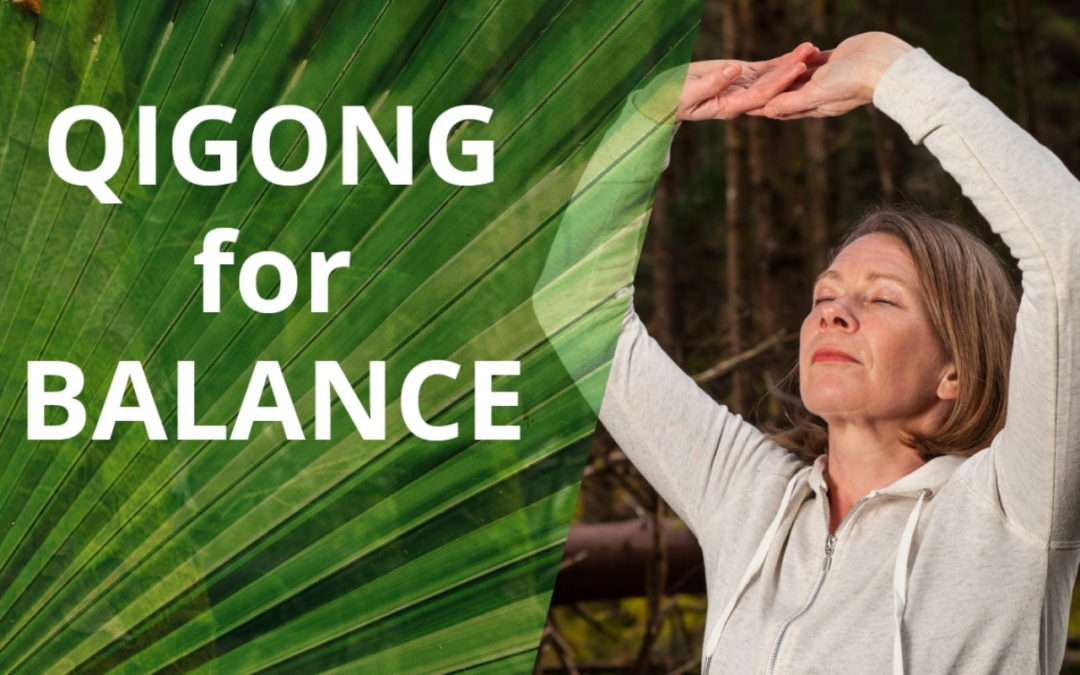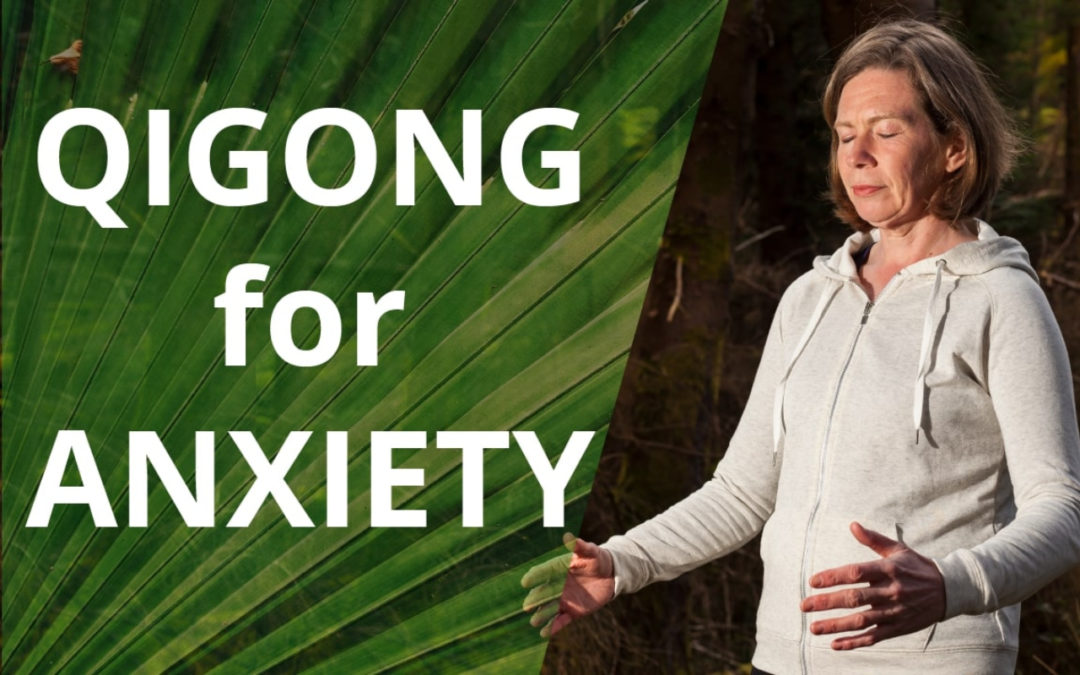
by janicetucker | 15 Mar 2018 | Qigong, Qigong Routines, Qigong To Help Manage Specific Health Conditions
Feeling stiff and inflexible, or feeling pain in your joints is debilitating and can be a source of misery and depression for many people. Approximately 350 million people worldwide have arthritis (www.medicinenet.com) which makes this a huge problem for both the healthcare profession and the sufferers themselves. Although there is no cure for arthritis, there are many practices and methods we can adopt to help minimise the progression of this condition. In the video on this page you will learn how to use Qigong exercises for arthritis and other related bone and joint conditions.
Janice Tucker is a practitioner of Traditional Chinese Medicine and Medical Qigong, and the founder of the Space To Relax online programme of Qigong video lessons.
Please don’t forget to subscribe to my YouTube channel by clicking the red “Subscribe” button. That way you miss my regular videos which are full of useful health enhancing tips. These videos will help you to enhance your health and prevent illness from arising in the first place. Also please give this video a “Like” if you found it informative.
What Are The Symptoms of Arthritis?
Symptoms of arthritis include pain and limited function of joints. Inflammation of the joints from arthritis is characterised by joint stiffness, swelling, redness, and warm. Tenderness of the inflamed joint can be present.
In Traditional Chinese Medicine terms your symptoms are due to a lack of smooth and open flow of blood, fluid and Qi (energy) through the joints. This is often where things tend to stagnate because there are lots of nooks and crannies in the joints for the blood, fluid and energy to flow though. The narrowing of these circulatory pathways is a bit like the narrowing of a motorway caused by road works; if a lane is closed everything backs up in the area!
The Solution – Qigong Exercises For Arthritis
Any moving Qigong methods in general are perfect for dealing with arthritis. This is because they smooth the flow of energy (Qi) and blood flow through the area. In Chinese Medicine terms, it is a stagnation or blockage of the flow of Qi and blood which can cause pain. However there are a couple of methods which are particularly useful to help you regulate arthritis more specifically.
1. Qigong for Cleansing. Watch my previous video on “Qigong For Cleansing“. You can use this method of Qigong for arthritis because it helps to rid any waste Qi from your body, i.e. stiffness, aches, heaviness and pain.
2. For back pain. Watch my previous video on “Qigong Standing Posture“. This method is exceptionally helpful if you suffer with arthritis of the spine or knees. This is because it provides you with a standing posture which will avoid any obstruction in the flow of Qi and blood through two areas which are particularly prone to stagnation and pain, the lower back and neck.
3. For morning stiffness and pain. If you feel especially stiff in the mornings and it takes you a while to get going then it will be very helpful for you to start the day with a few gentle movements. This will help you to get going quicker in the mornings! Click here for my Qigong morning routine.
4. For fibromyalgia and related muscle stiffness and pain. A few of my Space To Relax online Qigong members requested the video I made here as they suffer with fibromyalgia. If you also suffer with muscle stiffness and pain in addition to joint stiffness watch my previous video on” Qigong for Fibromyalgia“.
What Do I Do Next?
1. Head over to my Space To Relax homepage. There you can sign up for a free 3 part video series of Qigong lessons. These three lessons are perfect Qigong exercises for arthritis, in addition to the videos referred to above. They will help ease out stiff and inflexible joints. In addition they will help you to manage arthritis to the best of your ability.
2. Subscribe to my YouTube channel by clicking the red “Subscribe” button. That way you won’t miss my regular videos which are full of useful health enhancing tips. Also please share with me in the comments box what you do to help relieve pain in your joints.
3. Join my free Facebook group, “Space To Relax Free Group” and leave any comments for me there. I’ll be happy to answer any questions on Qigong exercises for arthritis. Also you will receive regular posts with useful tips about how to use Qigong to improve your state of health.
4. You may want to consider looking into how various supplements such as turmeric supplements and anti inflammatory foods can help you to manage arthritis and joint pain.
home

by janicetucker | 8 Mar 2018 | Qigong, Qigong Routines, Qigong To Help Manage Specific Health Conditions
Shoulder and neck pain is one of the most common complaints I see in my Chinese Medicine and Acupuncture clinic. If you have ever experienced this before you’ll know how miserable this can make you feel. In the video on this page I’ll show you some simple Qigong for shoulder and neck pain so that you can feel much looser, more flexible and stronger in this area.
Janice Tucker is a practitioner of Traditional Chinese Medicine and Medical Qigong. She is also the founder of the Space To Relax online programme of Qigong video lessons.
Please don’t forget to subscribe to my YouTube channel by clicking the red “Subscribe” button on that channel. That way you won’t miss my regular videos which are full of useful health enhancing tips. These videos will help you to enhance your health and prevent illness from arising in the first place. Also please give this video a “Like” if you found it informative.
How Does Shoulder and Neck Pain Affect Us?
You will know all too well if you have ever suffered with shoulder or neck pain before that it can leave you feeling absolutely miserable.
• Physically you may be in so much pain that you have to take pain medication. This may then have its own side effects that you have to deal with.
• You will most likely feel restricted in your movement. This may mean that you can’t lift things, reach up in to cupboards, tie your bra strap or put on your coat.
• The restriction will affect you when you’re driving. You may not be able to turn your head fully to look behind you when reversing. Your shoulders may become more painful after driving as you are holding them in tension.
• If this situation goes unchecked you may feel pain in other areas of your body such as headaches or lower back ache.
• Mentally and emotionally you will be affected too. You may feel depressed, irritable and anxious that this pain will never improve.
So, it is obvious that this is not a situation which you would want to tolerate for any longer than absolutely necessary!
The Solution – Qigong For Shoulder and Neck Pain
Any moving Qigong methods in general are perfect for dealing with shoulder and neck pain as they smooth the flow of energy (Qi) and blood flow through the area. In Chinese Medicine terms, it is a stagnation or blockage of the flow of Qi and blood which can cause pain. However there are a couple of methods which are particularly useful to help you regulate shoulder and neck pain more specifically.
1. Neck movements. Tilt the head forward and back, tilt the head from one side to the other, turn the head from one side to the other. Each movement is performed slowly. Breathe out as you move away from your starting position, breathe in as you move back to the starting position. Caution: anyone with serious neck problems be very gentle with these movements and take care not to over stretch.
2. Watch Lesson 2 in my free 3 part video series which shows you the “Circles” exercise. This is an excellent method of Qigong for shoulder and neck pain as it improves the flow of Qi and blood through these areas. See below on how to get this free video series.
3. Practice any moving Qigong for shoulder and neck pain as this will promote the smooth flow of Qi so that you can lessen any pain or stiffness.
What Do I Do Next?
If you would like to start using Qigong for shoulder and neck pain then:
1. Head over to my Space To Relax homepage. There you can sign up for a free 3 part video series of Qigong lessons. Lesson 2, the “Circles” exercise is the perfect moving Qigong exercise to perform. It promotes the smooth flow of Qi through the shoulders.
2. Subscribe to my YouTube channel by clicking the red “Subscribe” button. That way you won’t miss my regular videos which are full of useful health enhancing tips. Also please give this video a “Like” and share with me in the comments box any tips you have to help relieve shoulder and neck pain.
3. Join my free Facebook group, “Space To Relax Free Group” and leave any comments or questions for me there. I’ll be happy to answer them. Also, by joining this group, you’ll receive really useful tips about how to use Qigong to improve your state of health.
4. Watch my previous video, “Getting Rid of the Negative With Qigong Breathing Exercises“: In this method focus on the pain that you want to release from your shoulder or neck and breathe it out using the technique shown in the video.
home

by janicetucker | 23 Oct 2017 | Qigong, Qigong Routines, Qigong To Help Manage Specific Health Conditions
Nearly all Qigong methods combine an element of balance, except the ones where you are lying down meditating. I mentioned this in a previous video blog about the differences between Qigong and Yoga. In this post I’ll tell you my three best tips which show you how to use Qigong for balance. This is important for the elderly in helping to prevent falls. Balance is also important for athletes where a good sense of balance can make all the difference to athletic performance.
Janice Tucker is a practitioner of Traditional Chinese Medicine and Medical Qigong. She is also the founder of the Space To Relax online programme of Qigong video lessons.
Please don’t forget to subscribe to my YouTube channel by clicking the red “Subscribe” button if you head over to YouTube. That way you won’t my regular videos which are full of useful health enhancing tips. These videos will help you to benefit your health and prevent illness from arising in the first place. Also please give this video a “Like” if you found it informative.
3 Ways To Use Qigong For Balance
1. Relaxation
The more relaxed you are the more you can find your natural balance and centre of gravity. Holding tension in your muscles causes imbalance. Refer to the previous video on Qigong Standing Posture to learn more details about how to maintain balance and relaxation in this posture.
2. Do Exercises To Promote Leg Strength
Any standing posture will help to increase the strength of your legs if practiced regularly over time. A good example you can look at is one of the 8 Pieces of Brocade (Ba Duan Jin) exercises called “Open Eyes Wide With Clenched Fists” which is performed from a horse stance position. This stance will help to develop the strength of your thighs giving you a more solid and stable foundation leading to an improved sense of balance.
3. Learn How To Stand Properly
Learning how to stand properly by “regulating” the position of the neck and lower spine will improve your balance. From there you can then walk with more confidence and an improved sense of balance.
If you practice these three methods then your overall movement will be more solid and stable resulting in improved balance and confidence as you move around.
What Do I Do Next?
1. Head over to my Space To Relax homepage to sign up for a free 3 part video series of Qigong lessons.
2. Please don’t forget to subscribe to my YouTube channel by clicking the red “Subscribe” button. Then you won’t miss my regular videos which are full of useful health enhancing tips. Also please give this video a “Like” if you learned more about how to use Qigong for balance (and share with any friends or family, especially the more elderly people you know who may not be so steady on their feet).
3. If you are on Facebook head over to my free group, “Space To Relax Free Group” and leave any comments or questions for me there. I’ll be happy to answer them. Also, by joining this group, you will receive regular posts of Qigong articles and videos with really useful tips about how to use Qigong to improve your state of health.
home

by janicetucker | 12 Oct 2017 | Qigong, Qigong Routines, Qigong To Help Manage Specific Health Conditions
Many people suffer with cold hands, especially in the winter. The result is often uncomfortable at best and excruciatingly painful at worst. Having to put up with cold hands decreases our flexibility and dexterity. For any of you with joint stiffness or arthritic conditions the cold can make your hands feel even more inflexible and stiff. In this post I’ll be showing you how to use Qigong for cold hands, how to warm your hands and what to do to prevent your hands from getting cold in the first place.
Janice Tucker is a practitioner of Traditional Chinese Medicine and Medical Qigong, and the founder of the Space To Relax online programme of Qigong video lessons.
Please don’t forget to subscribe to my YouTube channel by clicking the red “Subscribe” button when you head over to YouTube so you don’t miss my regular videos which are full of useful health enhancing tips. These videos will help you to benefit your health and prevent illness from arising in the first place. Also please give this video a “Like” if you found it informative.
Qigong For Cold Hands and 3 Ways to Warm Them
1. Circles Exercise
This is Lesson 2 in my free 3 part video series of Qigong lessons. The circles exercise is a perfect Qigong for cold hands method as your focus in on your hands. Where our mind goes, the Qi follows and one of the functions of Qi is to warm us up! To learn this exercise simply read the details at the end of this article on how to sign up for your free video series.
2. Discharge Waste Qi With Vibration
This is Lesson 3 in my free 3 part video series of Qigong lessons. The principle here is to think of ridding cold from your hands as you vibrate the body and exhale. To learn this exercise keep reading to the end to get details on how to sign up for the free video series.
3. Any Physical Exercise
Physically moving the body is a fantastic way to send warmth to your extremities and thereby warm your hands. Exercise promotes circulation and will have the effect of warming the whole body, including the hands.
What To Do To Prevent Cold Hands
1. Never wash your hands or prepare vegetables in cold water as this is just putting cold on top of cold if you are prone to cold hands. When washing your hands always let the tap run warm before placing your hands under the water. When preparing vegetables do so in warm water and then rinse them in cold water at the end.
2. Wear gloves when you go out in to cold weather. It seems logical to do this but how many of us actually remember and wear gloves as a habit?
3. Eat regularly and often as eating generates energy (and warmth). In particular, eat warm foods in the winter. I often get cold hands when I need to eat. As soon as I’ve eaten something warm my hands become toasty again!
What Do I Do Next?
To learn the exercises mentioned above and use Qigong for cold hands go to the Space To Relax homepage. There you can sign up to receive three free video lessons which will be delivered to you by e-mail over the course of a few days. The Circles method is Lesson 2 and Discharge with Vibration is Lesson 3.
Please don’t forget to subscribe to my YouTube channel by clicking the red “Subscribe” button. Then you won’t miss my regular videos which are full of useful health enhancing tips. Also please give this video a “Like” if you learned more about Qigong for immunity boosting (and share with any friends or family you know who suffer with cold hands).
If you are on Facebook head over to my free group, “Space To Relax Free Group” and leave any comments or questions for me there. I’ll be happy to answer them. Also, by joining this group, you will receive regular posts of Qigong articles and videos with really useful tips about how to use Qigong to improve your state of health.
home

by janicetucker | 2 Oct 2017 | Qigong, Qigong Routines, Qigong To Help Manage Specific Health Conditions
The students in my recent Qigong live workshop were so pleased to learn some simple methods to enhance their immunity. Now they can better resist coughs, cold and other nasty infections coming into the autumn. Even if you don’t live in the northern hemisphere as I do here in Ireland, please watch the accompanying video. We all know that boosting our immunity to its optimum is valuable thing to at any time of the year. In the video next to this text I’m going to give you some tips on how to use Qigong for immunity ehnancement. I’ll be showing you how to supercharge your immune system with quick and simple methods. You can integrate these methods into your daily activities very easily so there is no excuse for not doing them!
Janice Tucker is a practitioner of Traditional Chinese Medicine and Medical Qigong. She is also the founder of the Space To Relax online programme of Qigong video lessons.
Please don’t forget to subscribe to my YouTube channel by clicking the red “Subscribe” button above so you don’t miss my regular videos which are full of useful health enhancing tips. These videos will help you to benefit your health and prevent illness from arising in the first place. Also please give this video a “Like” if you found it informative.
Qigong For Immunity – My Top 4 Tips
1. Abdominal Breathing
a) Inhalation. In order to enhance your immunity think of inhaling clean, fresh, energising air that will improve your lung function, opening up your respiratory channels so that you can increase your resistance to disease.
b) Exhalation. As you exhale think of anything you don’t want in your body, especially if you have an infection, e.g. phlegm, cough, sinus pressure. Breathe out, using your mind to expel what you don’t want.
For more detail on this method, please click here to view my previous video on “Get Rid of the Negative with Qigong Breathing Exercises”.
2. One of the Six Healing Sounds
This is a “discharging” method which means you can use it to rid any sick or waste Qi from your body. In this method you use a specific sound to rid sick Qi from the Lung system. The sound is “tssss” and it creates a specific frequency which resonates with your lung system. In this way you can help enhance your immunity.
a) Breathe into the lower belly (Dan Tian) for 3 breaths.
b) Think of the lungs for 3 breaths.
c) Exhale each time saying the “tssss” sound as you turn to the side looking over your shoulder. As you do this think of expelling waste or sick Qi from your lungs.
You can perform this method from a standing position or as you are walking.
3. Discharge With Vibration
This is a very quick and easy Qigong for immunity method in which you simply vibrate the body to expel any sick or waste Qi from your body. It is Lesson 3 in my free 3 part Space To Relax video series (see below for details on how to access this).
4. Get Advice From Your Practitioner or Local Health Store
The ideal time to book a course of treatment with your Chinese medicine practitioner or acupuncturist is before your immune system is challenged. Make use of your healthcare practitioner or consult with your local health store to get advice on the best immune boosting herbs and supplements.
What Do I Do Next?
To learn even more tips on Qigong for immunity enhancement go to the Space To Relax homepage. There you can sign up to receive three free video lessons which will be delivered to you by e-mail over the course of a few days. Abdominal breathing is Lesson 1 and Discharge with Vibration is Lesson 3. Also, for the free audio meditation “Calm Your Busy Mind In 8 Minutes” scroll to the bottom of the Space To Relax homepage.
Please don’t forget to subscribe to my YouTube channel by clicking the red “Subscribe” button. Then you won’t miss my regular videos which are full of useful health enhancing tips. Also please give this video a “Like” if you learned more about Qigong for immunity boosting.
If you are on Facebook head over to my free group, “Space To Relax Free Group” and leave any comments or questions for me there. I’ll be happy to answer them. Also, by joining this group, you will receive regular posts of Qigong articles and videos with really useful tips about how to use Qigong to improve your state of health.
https://spacetorelax.com

by janicetucker | 24 Aug 2017 | Qigong, Qigong & Emotional Issues, Qigong Routines, Qigong To Help Manage Specific Health Conditions
When we feel anxious that is a sign that we are concerned about something in the future. If it’s a past negative event we are thinking of then the feeling is often one of resentment. In this post I’m going to give you some tips as to how to use Qigong for anxiety reduction. Below you will find my 3 top tips to use Qigong for anxiety.
Janice Tucker is a practitioner of Traditional Chinese Medicine and Medical Qigong, and the founder of the Space To Relax online programme of Qigong video lessons.
Please don’t forget to subscribe to my YouTube channel by clicking the red “Subscribe” button above so you don’t miss my regular videos which are full of useful health enhancing tips. These videos will help you to benefit your health and prevent illness from arising in the first place. Also please give this video a “Like” if you found it informative.
What Is Anxiety?
When we feel anxious we may feel the following sensations:
- Butterflies in the stomach or heart area
- Palpitations or racing heartbeat
- Clammy palms
- Shortness of breath
- Fear
- Withdrawn
- Can’t face people in social situations
Our anxiety will often keep us awake at night and rob us of peace of mind. It may cause us to think negatively about situations. If you experience any of these feelings then the video here will help you to get started on the path to annihilating anxiety.
3 Methods Using Qigong For Anxiety Reduction
1. The “One Breath” Method
Use this method of taking one abdominal breath into the belly and then breathing out. Consciously do this and you will find it very quickly calms your mind and leaves you feeling grounded.
2. Relax, Expand and Nourish The Heart Method
This simple, relaxing Qigong method is available as a free audio meditation on the Space To Relax homepage. Scroll to the bottom of the page to sign up for the audio called “Calm Your Busy Mind in 8 Minutes” and it will be delivered to you by e-mail. This extremely useful method will help you to reduce anxiety. It also promotes peaceful sleep by eliminating stagnant Qi (energy) flow on both a physical and emotional level.
3. Abdominal Breathing
This method is the basis of many Qigong methods. It is available as Lesson 1 in my free 3 part Qigong video lesson series (see below for details). Also you can learn Abdominal Breathing from one of my previous video blogs here. (https://spacetorelax.com/how-to-do-qigong-abdominal-breathing-or-diaphragmatic-breathing/).
What Do I Do Next?
To learn even more Qigong for anxiety reduction go to the Space To Relax homepage. There you can sign up to receive three free video lessons which will be delivered to you by e-mail over the course of a few days. Also, for the free audio meditation “Calm Your Busy Mind In 8 Minutes” scroll to the bottom of the Space To Relax homepage.
Please don’t forget to subscribe to my YouTube channel by clicking the red “Subscribe” button. Then you won’t miss my regular videos which are full of useful health enhancing tips. Also please give this video a “Like” if you learned more about Qigong for anxiety minimisation.
If you are on Facebook head over to my free group, “Space To Relax Free Group” and leave any comments or questions for me there. I’ll be happy to answer them. Also, by joining this group, you will receive regular posts of Qigong articles and videos with really useful tips about how to use Qigong to improve your state of health.
https://spacetorelax.com







